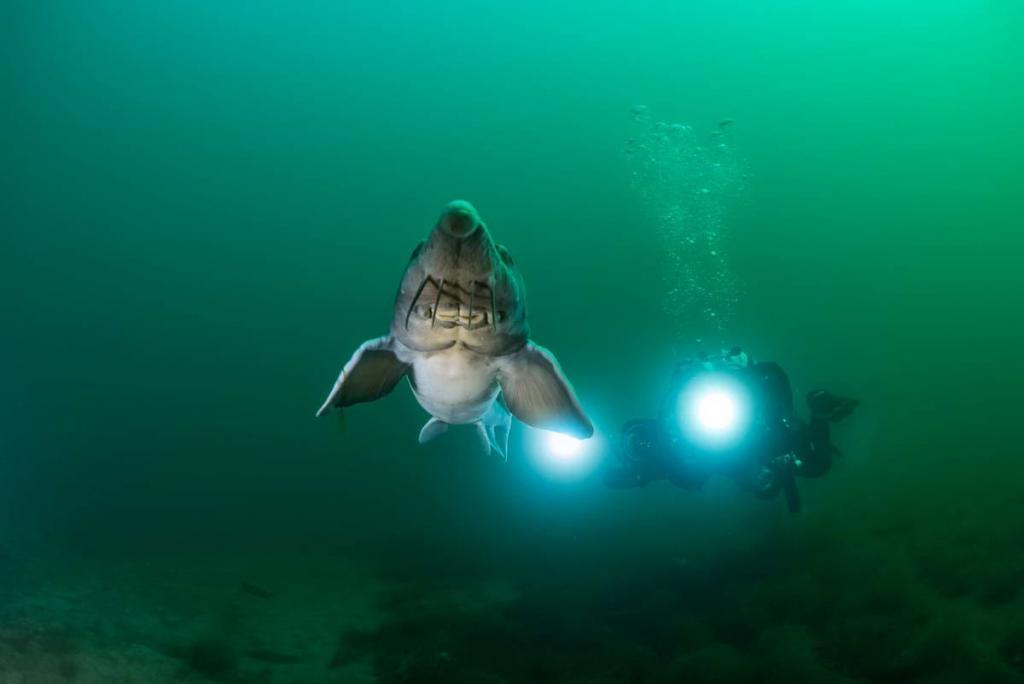
© Diving the quarries oe Loebejuen (c) Markus Schmidt
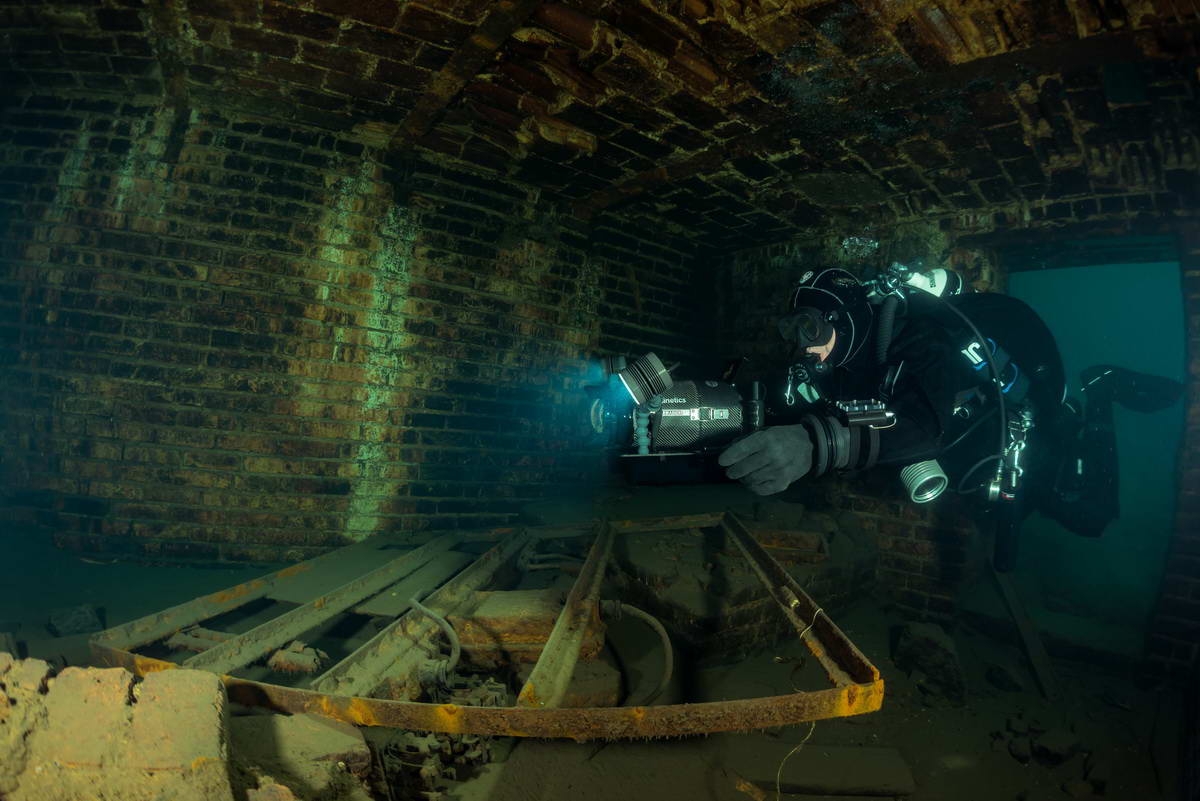
© Diving the quarries oe Loebejuen (c) Markus Schmidt
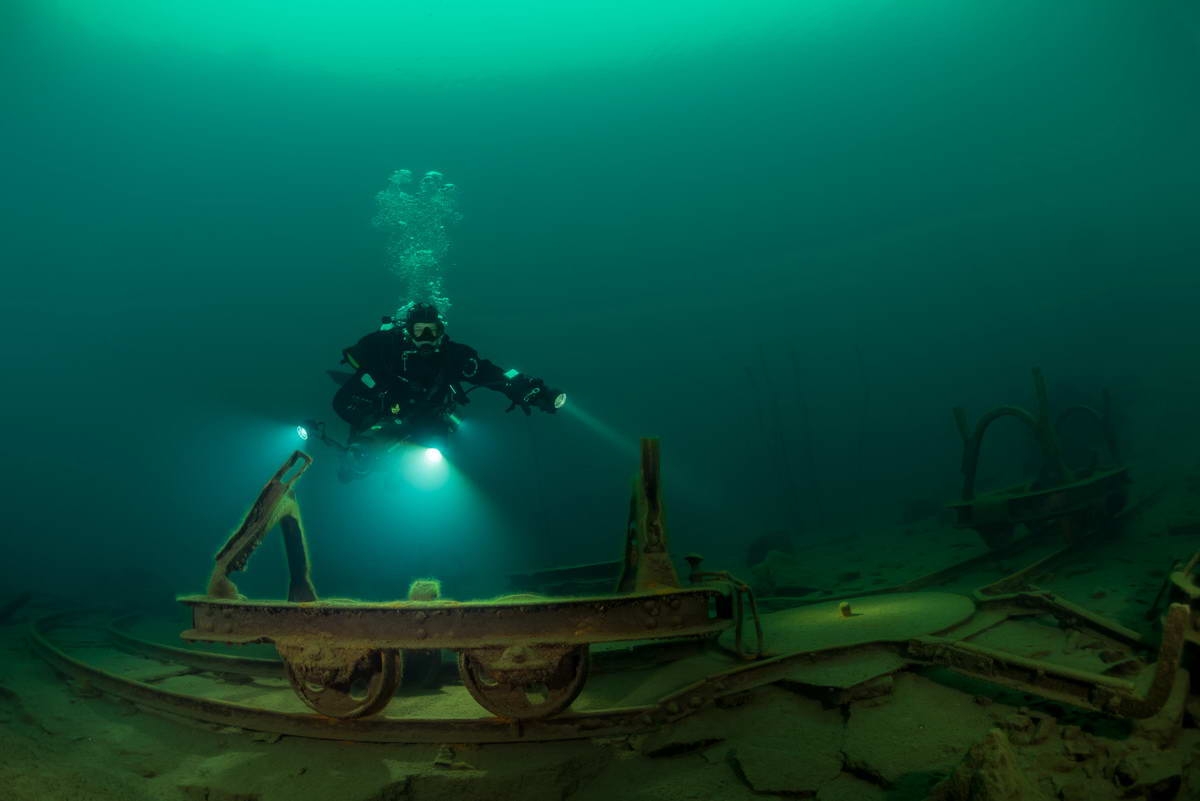
© Diving the quarries oe Loebejuen (c) Markus Schmidt
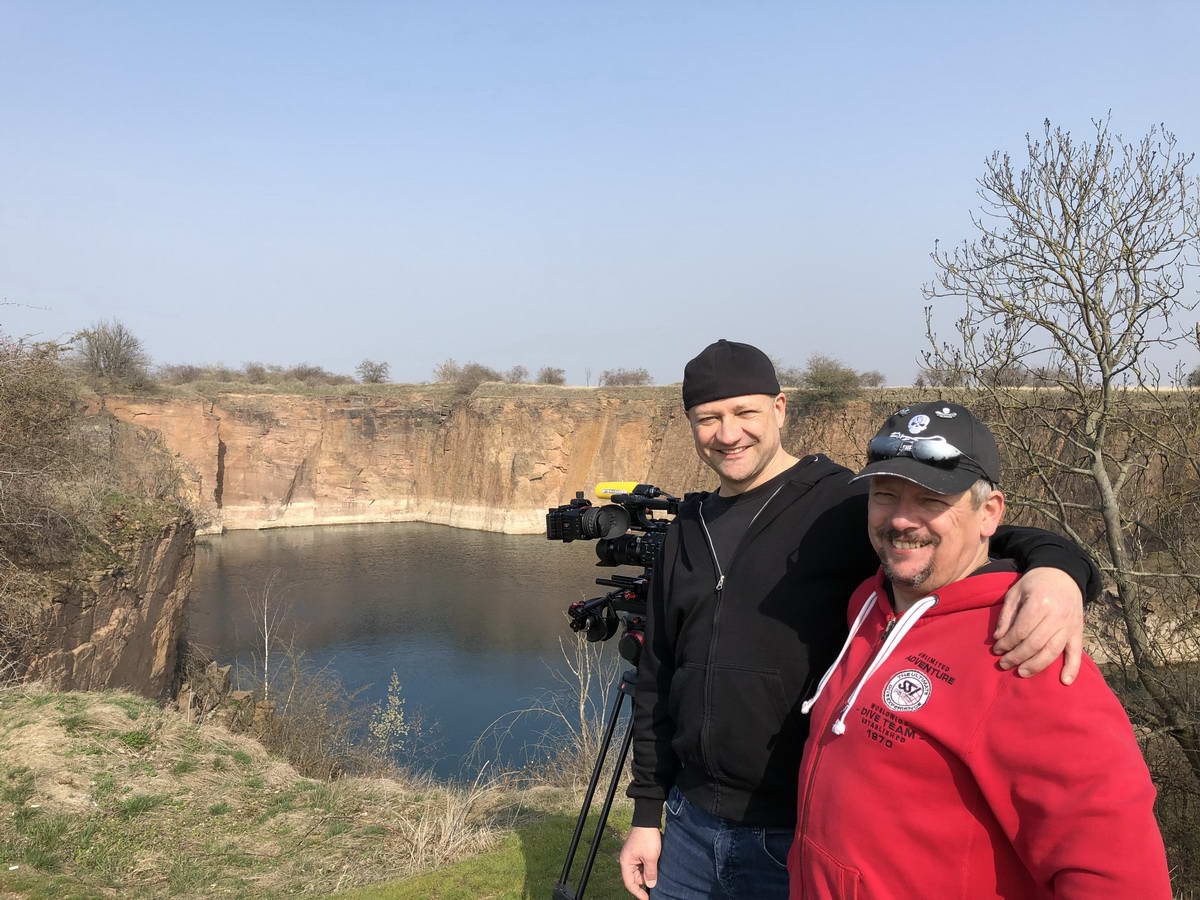
© Videographer and author Jens-Uwe Lamm (left) and Markus Schmidt
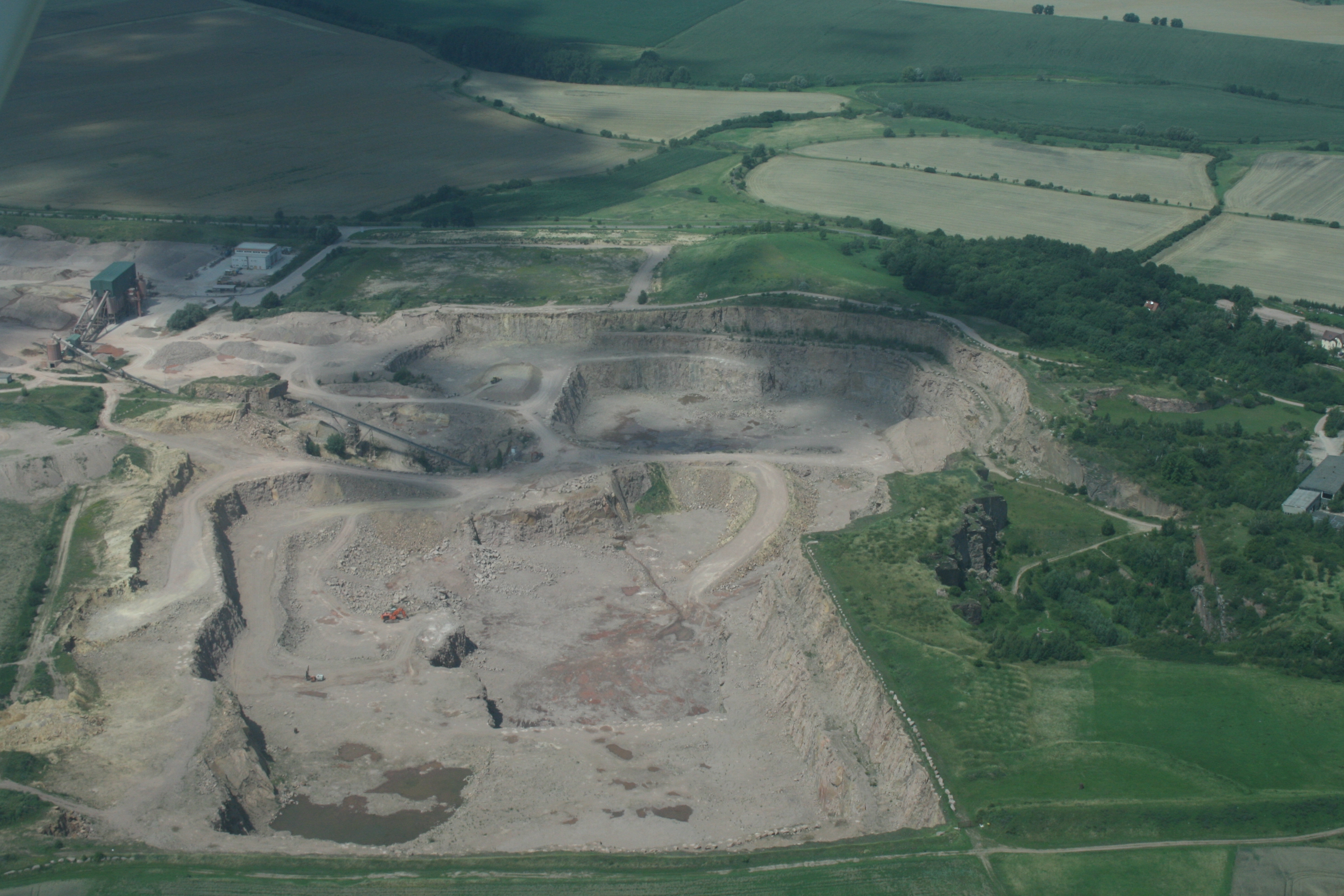
© Aerial Photograph of the Loebejuen quarries (c) Manfred Werbig
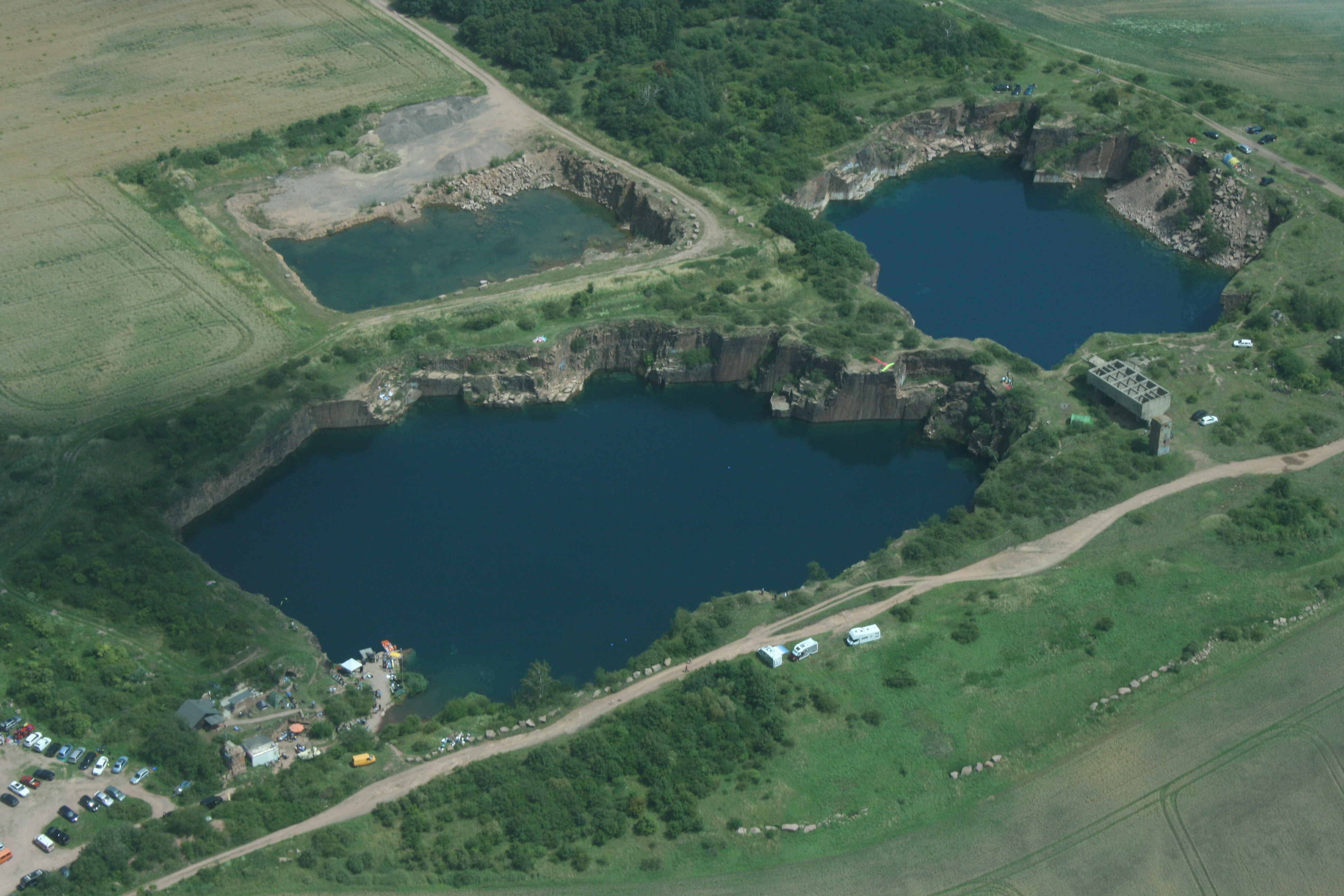
© Aerial Photograph of the Loebejuen quarries (c) Manfred Werbig
The history of the quarries of Loebejuen
April 7, 2019
Dive into the former quarriesLoebejuen, a small town with a population of nearly 2,300, is located 15km north of Halle (Saale) and has become a centre of attraction for scuba divers from all over Europe. Reason for this are the three flooded quarries – the so-called "Taucherkessel".
As early as 500 years ago, porphyry was mined in Loebejuen, a volcanic rock that is today being used to make façades, quarrystone and building-bricks as well as for paving streets and squares. Manfred Werbig, host and owner of the family business inn ‘Gasthaus Werbig’: "There is almost no cemetery here in the region where there is not at least one tombstone with Loebejuen porphyry ....". After the mining of the rock was stopped and the pumps were turned off, the three "Taucherkessel" filled with water soon.
About 10 years ago, Klaus Diersch, operator of the local dive centre, had the idea of making these waters accessible to divers. And not without reason... There were many relics left from the former mining in the quarries, so that today a fantastic underwater world is offered to the divers: pump houses, pipelines, remaining tracks with tipping-trucks on it as well as some modern debris, which found its way into one of the three quarries. But not only that, there are also a lot of marvellous fish to look at: large pikes, white fish, carp and perch; the sturgeons are probably the highlight in quarry 1 and 2.
These fish have been put into the quarries by Klaus Diersch some time ago, so the sturgeons are now really accustomed to the divers and can very close – a paradise for underwater photographers. Crayfish can be seen in all three quarries, but especially in number 3, where there is also a large catfish. Over the years, the infrastructure has been expanded at the dive site, so today bathrooms, equipment tables and benches can be found.
Due to the very good traffic connection, only ca. 500m from the motorway exit A14 Loebejuen, many divers find their way to the three quarries especially on the weekends. The small lakes have almost consistently good to very good visibility of 10-20 meters. In addition to the seasonal fluctuation of visibility, especially the divers are responsible for a clear sight in the water, because the sediment at the bottom of the quarries is very fine and even the slightest fin movement "into" the ground destroys the view for the following divers for hours!
Markus Schmidt, an ambitious hobby underwater photographer, has completed more than 150 dives especially in quarry 1 and presents wonderful pictures from the Loebejuen underwater world. Underwater cameraman Jens-Uwe Lamm visited the diving quarries together with him in March of this year and made a short film that gives us beautiful shots and tells a lot about the history of the quarries of Loebejuen.
Dive Centre:
www.taucherkessel.com